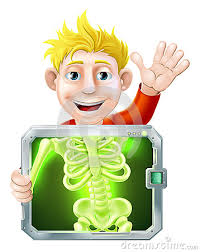Children X-Rays , Safety
The majority of people know the safety procedures when having radiological imaging done. Technicians require the patient to wear a lead apron and extra precautions when imaging pregnant women. But additional caution and safety procedures are required when imaging children.
Research shows that the risk from radiological imaging is small in comparison to its benefits but unnecessary radiation exposure should be avoided, especially for children. Children are more sensitive from the radiation of medical imaging such as x-rays than adults. One explanation for this is children’s cells divide more rapidly which can be exposed to even low-level radiation. The expected lifetime for the effects of radiation is longer in children therefore there is a risk for manifestation into cancer later on.
The FDA’s center for Devices and Radiological Health is informing consumers about minimizing unnecessary radiation exposure in children during medical procedures. Currently, the FDA is assisting the Gently Image campaign and including links on its webpage to help spread the precautions of children x-rays and medical imaging.
Tips for Parents
- Tracking. Keep track of child’s medical imaging histories with a referring physician when a new exam is recommended.( Refer to “My Child’s Medical Imaging Record” card, which is available from the Alliance for Radiation Safety in Pediatric Imaging).
- Ask the imaging facility. What safeguards do you have to reduce the risks to my child? Does the facility use reduced radiation techniques for children?
- Talk with child’s physician. Your child’s physician can find out if the imaging center that they refer uses appropriate pediatric imaging techniques. Also ask if there are alternative exams that do not use ionizing radiation and are equally as useful. Research and learn about ways health care professionals can lower radiation dose in imaging, especially CT scan, without compromising the quality of the exam used for diagnostic procedures.
- Check credentials. Ask and research if the facility has the American College of Radiology accreditation and if the CT technologists have the proper credentials. Make sure the person interpreting the image and results is a board certified radiologist.
More information on children x-rays and radiological imaging can be found at the Image Gently campaign website which includes resources from the Society for Pediatric Radiology, the American College of Radiology, the American Society of Radiological Technologists, and the American Association of Physicists in Medicine.
